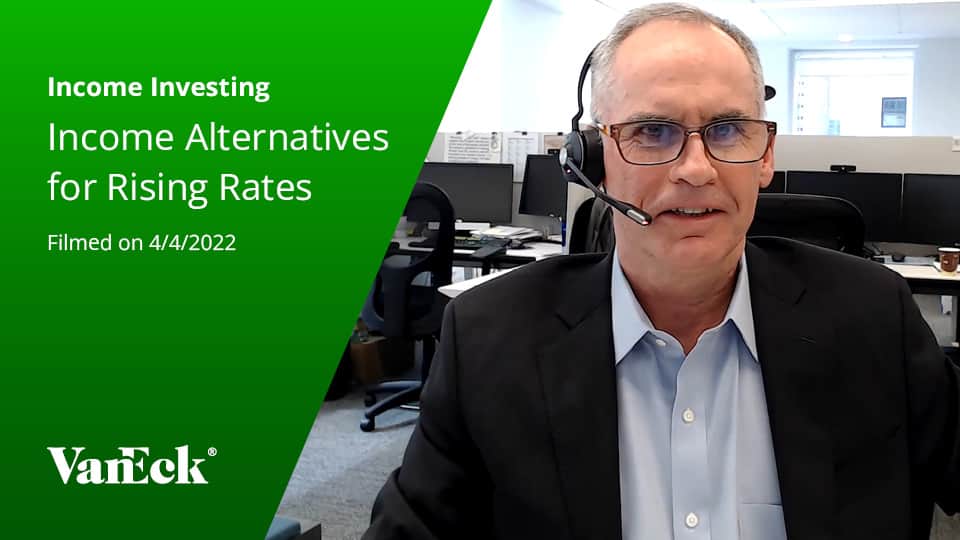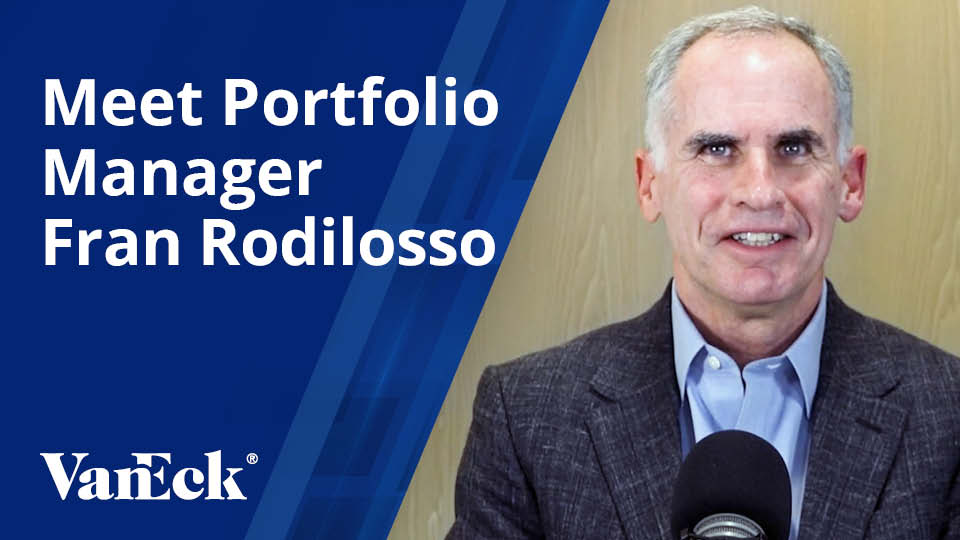Carry Boosts Fixed Income Resilience in Likely Fed Scenarios
November 10, 2022
Read Time 5 MIN
In Income Returns to Fixed Income Investing, we highlighted how the ongoing normalization of interest rates has made carry a meaningful component of return once again. This is enabling fixed income to be more resilient in the face of a wide range of potential market movements, including ones with even higher yields, credit spreads, or volatility. We believe that various fixed income asset classes are more attractive now and can serve as yield enhancers or portfolio diversifiers, or both, in a variety of market environments. In this blog we illustrate how three possible interest rate scenarios—Federal Reserve (Fed) pause, Fed pivot or hawkish surprise—may play out across different fixed income asset classes.
For each of the three scenarios, the table below lists estimated fixed income asset class returns over the next 12 months, as well as the yield levels these asset classes would have to exceed in one year in order for total returns to fall below 0%. Scenario 1 would suggest rates moving moderately higher and the Fed pausing in early 2023 amid continued market uncertainly and moderately wider credit spreads. Scenario 2 would suggest a Fed pivot and lower rates amid a moderate to deep recession (though not on the order of the Global Financial Crisis), with spreads settling at a level significantly higher than today. Scenario 3 would suggest the Fed is more aggressive than the market currently anticipates, in part because the economy remains robust, as reflected by tighter credit spreads.
| Potential Scenarios: | |||||
| 1. Fed Pause | 2. Fed Pivot | 3. Hawkish Surprise | |||
| Asset Class | YTW Today | Approximate Break Even Yield at 10/31/23 | Expected Return as of 10/31/23 if 10-year yields at 4%; HY spreads at 600; IG at 180 | Expected Return as of 10/31/23 if 10-year yields at 3%; HY spreads at 750, IG at 225 | Expected Return as of 10/31/23 if 10-year yields at 4.5%; HY spreads at 400, IG at 140 |
| US 10-year | 4.06 | 4.56 | 4.56 | 13.30 | 0.49 |
| IG Corps | 6.00 | 6.96 | 5.45 | 9.58 | 4.91 |
| High Yield | 9.06 | 11.35 | 3.72 | 1.83 | 9.82 |
| Fallen Angels | 7.68 | 9.21 | 2.44 | 2.11 | 7.89 |
| HY EM Corps | 13.15 | 17.45 | 3.22 | (4.26) | 16.29 |
| IG FRNs | 4.72 | 6.64 | 4.82 | 3.59 | 5.94 |
| CLOs | 7.60 | 9.71 | 4.25 | 0.19 | 9.60 |
As of 10/31/2022. 10 Year U.S. Treasury represented by ICE BofA Current 10-Year US Treasury Index; IG Corporates represented by ICE BofA US Corporate Index; HY Corporates represented by ICE BofA US High Yield Index; Fallen Angel HY Corporates represented by ICE US Fallen Angel High Yield 10% Constrained Index; EM HY Corporates represented by ICE BofA Diversified High Yield US Emerging Markets Corporate Plus Index; IG FRN represented by MVIS US Investment Grade Floating Rate Index; CLOs represented by J.P. Morgan CLO Index.
Using broad high yield as an example, at current levels the overall yield would need to increase by 2.29% to 11.35% to suffer a loss over the next year. That yield level has only been exceeded during four cycles in the last 25 years – the dot com bubble, the telecom blow-up, the GFC and COVID. The current yield level provides a substantial cushion to returns going forward, and as a result, high yield may provide positive returns even in a fairly dramatic spread widening environment. In fact, this is true for almost all of the asset classes listed above in almost all scenarios—although clearly some scenarios are more favorable than others. The key point is, however, that it is difficult to envision another year of returns similar to 2022, given the cushion provided by current yield levels and the significant rate and spread adjustments already experienced over the past several months.
All of the above analysis, of course, concerns nominal rates of return. Real interest rates and real returns in a static scenario, for the moment, remain negative for most bond asset classes. This is also why we believe it will take some time and a much harder turn in either the economic cycle or inflation before the Fed will be compelled to pivot. A deceleration and/or a pause is our default case over the next six months, but we do not see a high probability of both meaningfully lower yields and a soft landing in 2023.
To receive more Income Investing insights, sign up in our subscription center.
Related Topics
Related Insights
Fallen angels outperformed broad high yield by 0.24% in March and 0.10% YTD, due in part, to tighter spreads. Q1 2024 saw two fallen angels and two rising stars.
April 17, 2024
April 10, 2024
April 09, 2024
March 22, 2024
DISCLOSURES
ICE BofA Current 10-Year US Treasury Index tracks the performance of US dollar denominated sovereign debt publicly issued by the US government in its domestic market.
ICE BofA US Corporate Index tracks the performance of US dollar denominated investment grade corporate debt publicly issued in the US domestic market.
ICE BofA US High Yield Index comprises below-investment grade corporate bonds (based on an average of various rating agencies) denominated in U.S. dollars.
ICE US Fallen Angel High Yield 10% Constrained Index comprises below investment grade corporate bonds denominated in U.S. dollars that were rated investment grade at the time of issuance.
ICE BofA Diversified High Yield US Emerging Markets Corporate Plus Index comprises U.S. dollar-denominated bonds issued by non-sovereign emerging markets issuers that are rated below investment grade and issued in the major domestic or eurobond markets.
MVIS US Investment Grade Floating Rate Index comprises U.S. dollar denominated floating rate notes issued by corporate entities or similar commercial entities that are public reporting companies in the U.S. and rated investment grade.
J.P. Morgan CLO Index is a rules-based total return benchmark for broadly syndicated, arbitrage U.S. CLO debt.
Please note that VanEck may offer investments products that invest in the asset class(es) or industries included herein.
This is not an offer to buy or sell, or a recommendation to buy or sell any of the securities/financial instruments mentioned herein. The information presented does not involve the rendering of personalized investment, financial, legal, or tax advice. Certain statements contained herein may constitute projections, forecasts and other forward looking statements, which do not reflect actual results, are valid as of the date of this communication and subject to change without notice. Information provided by third party sources are believed to be reliable and have not been independently verified for accuracy or completeness and cannot be guaranteed. VanEck does not guarantee the accuracy of third party data. The information herein represents the opinion of the author(s), but not necessarily those of VanEck.
There are inherent risks with fixed income investing. These risks may include interest rate, call, credit, market, inflation, government policy, liquidity, or junk bond. When interest rates rise, bond prices fall. This risk is heightened with investments in longer duration fixed-income securities and during periods when prevailing interest rates are low or negative.
All investing is subject to risk, including the possible loss of the money you invest. As with any investment strategy, there is no guarantee that investment objectives will be met and investors may lose money. Diversification does not ensure a profit or protect against a loss in a declining market. Past performance is no guarantee of future results.
© Van Eck Securities Corporation, Distributor, a wholly owned subsidiary of Van Eck Associates Corporation.
Related Insights
October 19, 2022
September 29, 2021
Related Funds
DISCLOSURES
ICE BofA Current 10-Year US Treasury Index tracks the performance of US dollar denominated sovereign debt publicly issued by the US government in its domestic market.
ICE BofA US Corporate Index tracks the performance of US dollar denominated investment grade corporate debt publicly issued in the US domestic market.
ICE BofA US High Yield Index comprises below-investment grade corporate bonds (based on an average of various rating agencies) denominated in U.S. dollars.
ICE US Fallen Angel High Yield 10% Constrained Index comprises below investment grade corporate bonds denominated in U.S. dollars that were rated investment grade at the time of issuance.
ICE BofA Diversified High Yield US Emerging Markets Corporate Plus Index comprises U.S. dollar-denominated bonds issued by non-sovereign emerging markets issuers that are rated below investment grade and issued in the major domestic or eurobond markets.
MVIS US Investment Grade Floating Rate Index comprises U.S. dollar denominated floating rate notes issued by corporate entities or similar commercial entities that are public reporting companies in the U.S. and rated investment grade.
J.P. Morgan CLO Index is a rules-based total return benchmark for broadly syndicated, arbitrage U.S. CLO debt.
Please note that VanEck may offer investments products that invest in the asset class(es) or industries included herein.
This is not an offer to buy or sell, or a recommendation to buy or sell any of the securities/financial instruments mentioned herein. The information presented does not involve the rendering of personalized investment, financial, legal, or tax advice. Certain statements contained herein may constitute projections, forecasts and other forward looking statements, which do not reflect actual results, are valid as of the date of this communication and subject to change without notice. Information provided by third party sources are believed to be reliable and have not been independently verified for accuracy or completeness and cannot be guaranteed. VanEck does not guarantee the accuracy of third party data. The information herein represents the opinion of the author(s), but not necessarily those of VanEck.
There are inherent risks with fixed income investing. These risks may include interest rate, call, credit, market, inflation, government policy, liquidity, or junk bond. When interest rates rise, bond prices fall. This risk is heightened with investments in longer duration fixed-income securities and during periods when prevailing interest rates are low or negative.
All investing is subject to risk, including the possible loss of the money you invest. As with any investment strategy, there is no guarantee that investment objectives will be met and investors may lose money. Diversification does not ensure a profit or protect against a loss in a declining market. Past performance is no guarantee of future results.
© Van Eck Securities Corporation, Distributor, a wholly owned subsidiary of Van Eck Associates Corporation.
Related Insights
October 19, 2022
September 29, 2021

